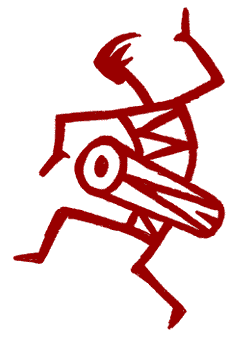

Thought of the Week Archives |
 |

|
|
|
January 20, 2003 The Range of Feelings Science attempts to separate experience into the categories of perception, sensation, and feeling (emotion). In my experience, however, this is not possible. However subtle, every perception has a sensate and a feeling content. Perceptions are sensations, perceptions are feelings, sensations are perceptions, sensations are feelings, feelings are perceptions, and feelings are sensations. At all times, even in sleeping and comatose states, every living being is busy with activity on a cellular, molecular, or energetic level. This activity creates myriad vibrations that are the experience of life, whether we call them perceptions, sensations, or feelings. For simplicity, I call them all feelings because there is not a perception or sensation I do not feel or sense in some way. Life is feeling. Feeling is life. The light spectrum is an undifferentiated continuum, but for practical purposes we are able to take note of various colours, including red, orange, yellow, green, blue, and violet. Similarly, although there are no absolute divisions, feelings are part of a continuum in which we can find variations. Happiness is the state in which our needs for safety and fulfillment are met. When our needs are not met, we feel pain and attempt to rectify the situation. If we succeed, we return to happiness. If we do not succeed, the feelings that arise vary according to the situation and the individual. I classify these feelings into four general groups - Anger, Shame, Sadness, and Fear. Although feeling responses are individual, and can appear in any order, there is a common progression that often occurs when the integrity of an organism is breached by neglect or abuse. This progression moves from anger through shame and sadness to fear. The more sudden and harsh the violation, however, the more quickly the feeling progression moves past anger, shame, and sadness - and jumps directly to fear. To illustrate the operation of these feelings, it is useful to investigate them as a gradually developing series. Initially, if we are not successful in getting our needs met, we protest, protect, or fight back, depending on the situation. The intention of this response is to vigorously return the organism to its original integrity. I call this general feeling state Anger. In other animals it appears as the warning growl, the hiss, the show of teeth; it is an assertion of power intended to prevent injury. When necessary, it is essential for the health and well-being of ourselves, our family, and our social group (tribe). When anger is not successful in returning us to a state of happiness, we experience a loss of power and often feel Shame. This occurs when we feel judged or when we judge ourselves as being bad or flawed in some way. If the state of shame and "badness" persists, we may drop into an even lower energetic level called Sadness. The feelings that occur in this state indicate a condition that often becomes dangerous to health. When the organism is in danger, the alarm that jolts it into action is Fear. Fear is present at the first sign of a problem and increases in proportion to the degree of perceived danger. Fear is essentially the anticipation of death. The least fear will be felt in conjunction with the injury or death of a few cells, and the worst fear will be felt in anticipation of the death of the entire organism. All fears, from anxiety to paranoia, are ultimately fears of death. The following is a basic list of feeling states from happiness to fear:
Happiness - satisfaction, contentment, delight, joy This continuum from anger to fear has both an organic and a personal history. When infants and children don't get their needs met, they naturally make efforts to alert their caretakers. When this doesn't work, they protest and get angry. When this fails (or they are beaten) they feel hurt and shame. If their cries make no difference and their needs continue to go unmet, they shut down and become fundamentally despairing. Given that their system is in constant danger of neglect or abuse, they live in a conscious - or unconscious - state of fear. When these children become adults, the hurtful feelings they still carry often cause havoc in their lives. Although they have a full range of feelings to express and resolve, a certain group of feelings is usually predominant. Some people are mostly angry, others are mostly sad. Some are full of shame while others are full of anxiety. In therapy, the main feeling state that we "present" is an indication of how the process needs to unfold. What comes up first needs to be dealt with first, and each feeling type will have a different style of expression and will need to be approached in its own way. Anger is very different from fear, although on the bottom line they may be very connected. Feelings are the vibrations of our bodies living. They are what we are, and so they hold the greatest intelligence our systems are capable of. We need to honour this wisdom and allow for this needed expression in all its amazing variations. Feelings are the colours of life. |